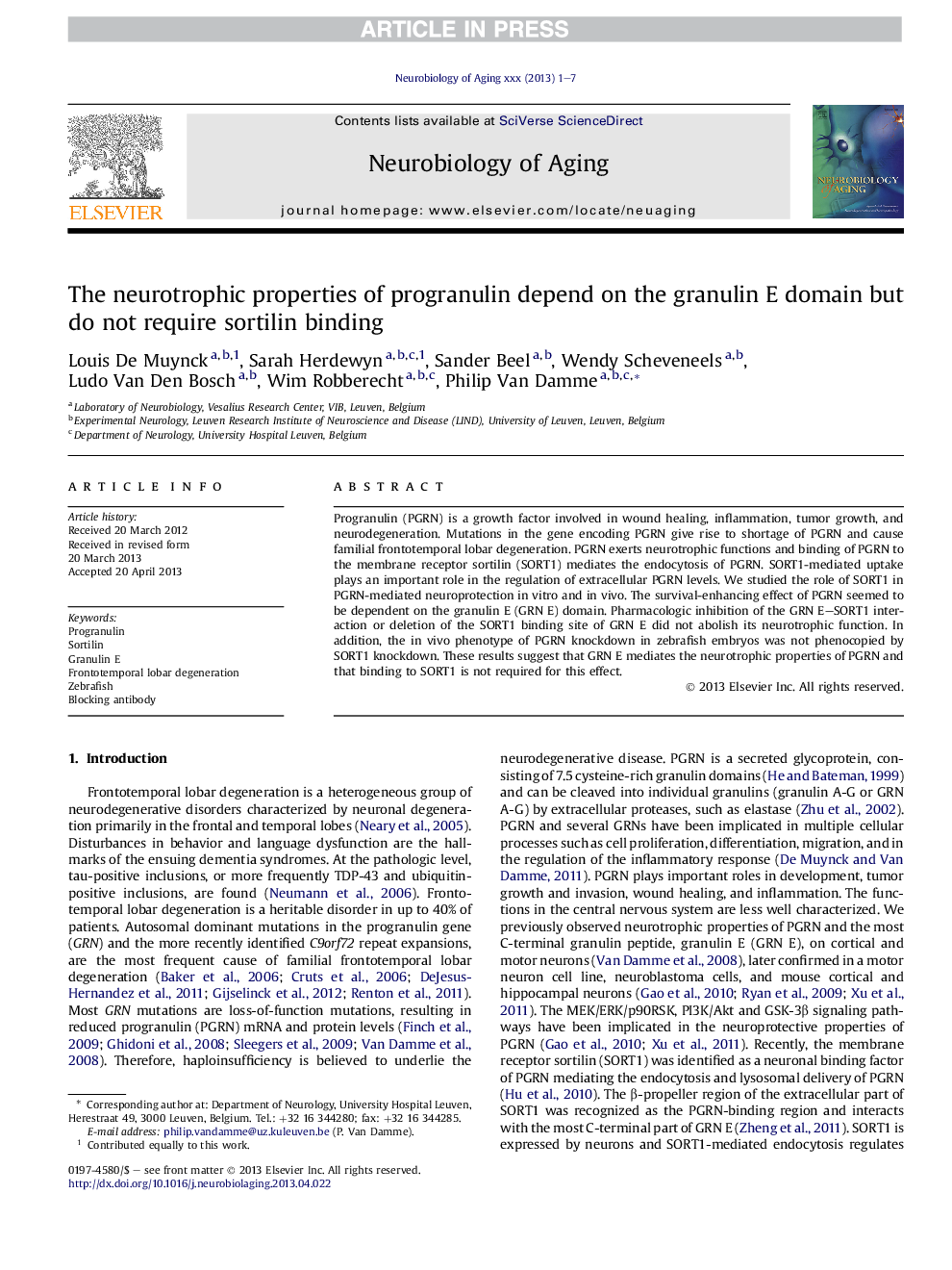| Article ID | Journal | Published Year | Pages | File Type |
|---|---|---|---|---|
| 6806856 | Neurobiology of Aging | 2013 | 7 Pages |
Abstract
Progranulin (PGRN) is a growth factor involved in wound healing, inflammation, tumor growth, and neurodegeneration. Mutations in the gene encoding PGRN give rise to shortage of PGRN and cause familial frontotemporal lobar degeneration. PGRN exerts neurotrophic functions and binding of PGRN to the membrane receptor sortilin (SORT1) mediates the endocytosis of PGRN. SORT1-mediated uptake plays an important role in the regulation of extracellular PGRN levels. We studied the role of SORT1 in PGRN-mediated neuroprotection in vitro and in vivo. The survival-enhancing effect of PGRN seemed to be dependent on the granulin E (GRN E) domain. Pharmacologic inhibition of the GRN E-SORT1 interaction or deletion of the SORT1 binding site of GRN E did not abolish its neurotrophic function. In addition, the in vivo phenotype of PGRN knockdown in zebrafish embryos was not phenocopied by SORT1 knockdown. These results suggest that GRN E mediates the neurotrophic properties of PGRN and that binding to SORT1 is not required for this effect.
Related Topics
Life Sciences
Biochemistry, Genetics and Molecular Biology
Ageing
Authors
Louis De Muynck, Sarah Herdewyn, Sander Beel, Wendy Scheveneels, Ludo Van Den Bosch, Wim Robberecht, Philip Van Damme,
